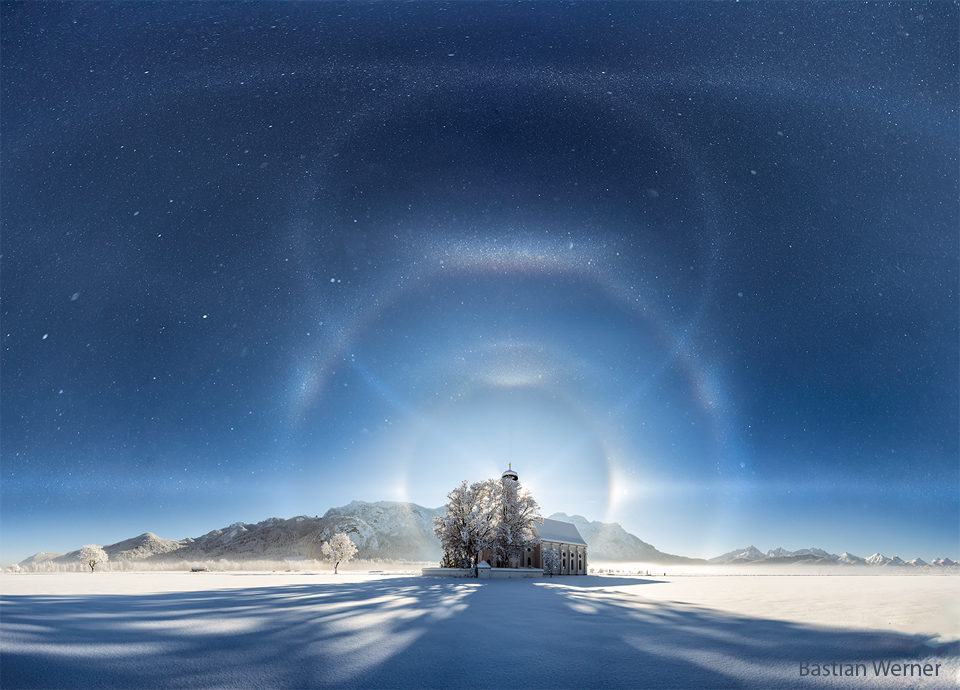Astronomy Picture of the Day
Discover the cosmos! Each day a different image or photograph of our fascinating universe is featured, along with a brief explanation written by a professional astronomer.
Image Credit & Copyright: Bastian Werner
Explanation: What's causing those unusual sky arcs? Ice crystals. While crossing a field of fresh snow near Füssen, Bavaria, Germany, earlier this month, the photographer noticed that he had entered an ice fog. For suspended water to freeze into an ice fog requires quite cold temperatures, and indeed the air temperature on this day was measured at well below zero. The ice fog reflected light from the Sun setting behind St. Coleman Church. The result was one of the greatest spectacles the photographer has ever seen. First, the spots in the featured picture are not background stars but suspended ice and snow. Next, two prominent ice halos are visible: the 22-degree halo and the 46-degree halo. Multiple arcs are also visible, including, from top to bottom, antisolar (subsun), circumzenithal, Parry, tangent, and parhelic (horizontal). Finally, the balloon shaped curve connecting the top arc to the Sun is the rarest of all: it is the heliac arc, created by reflection from the sides of hexagonally shaped ice crystals suspended in a horizontal orientation.
Authors & editors: Robert Nemiroff (MTU) & Jerry Bonnell (UMCP)
NASA Official: Phillip Newman Specific rights apply.
NASA Web Privacy Policy and Important Notices
A service of: ASD at NASA / GSFC,
NASA Science Activation
& Michigan Tech. U.
This is an automated email. If you notice any problems, just send me a note at gtracy@gmail.com. You can add and remove email addresses to this distribution list here, https://apodemail.org.Unsubscribe

No comments:
Post a Comment